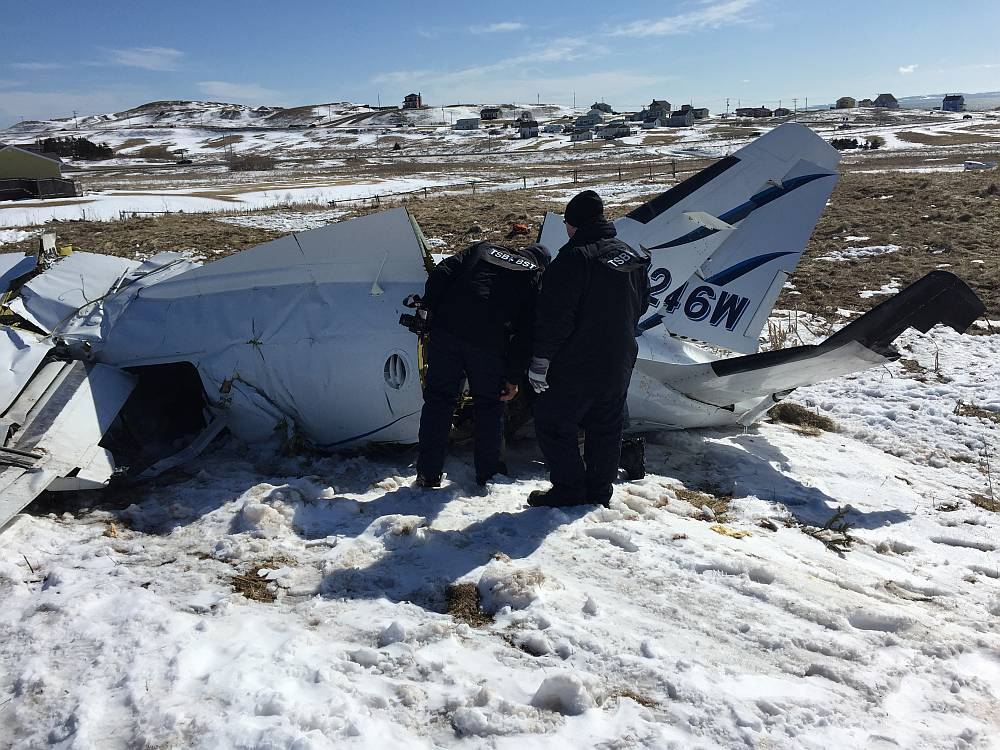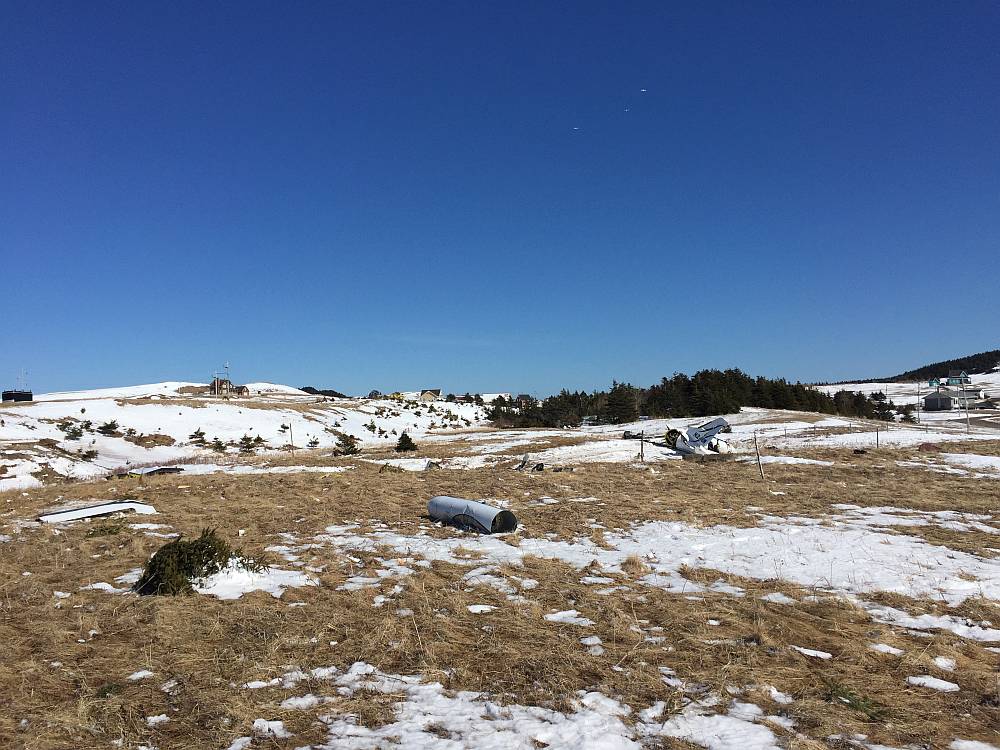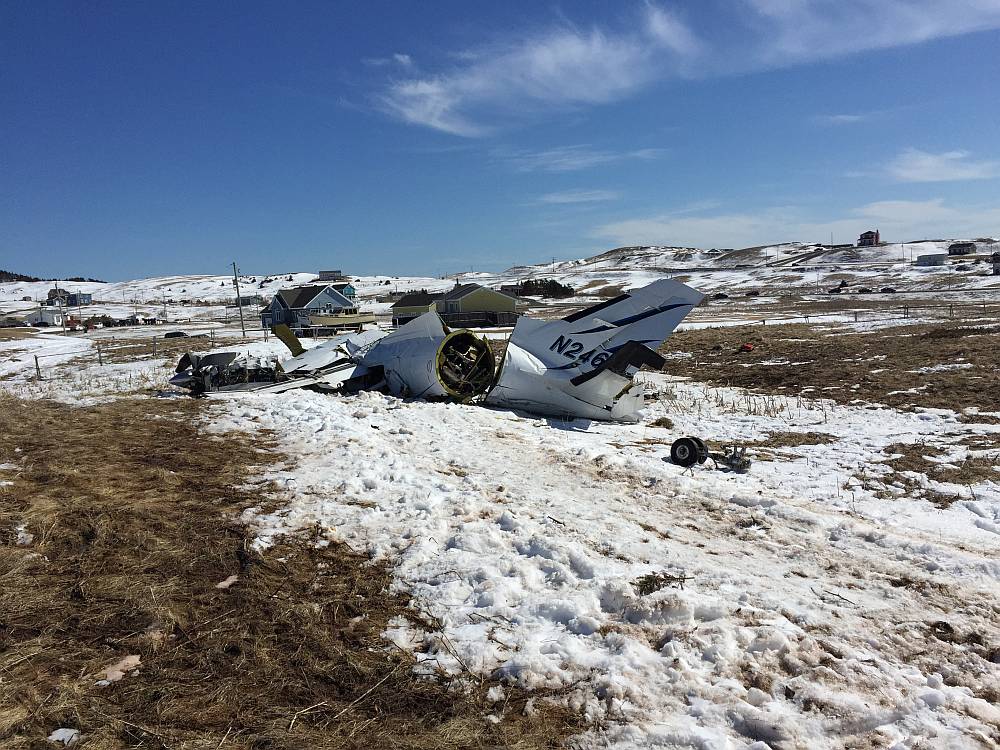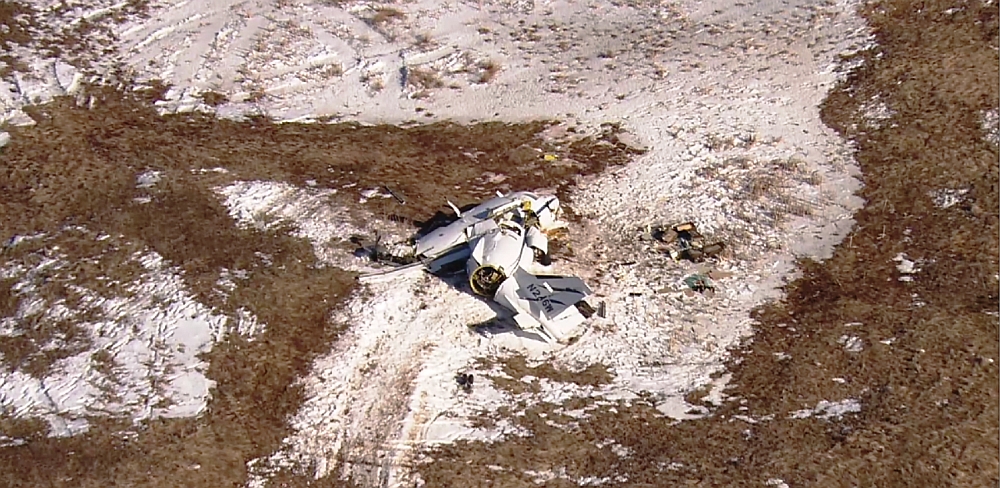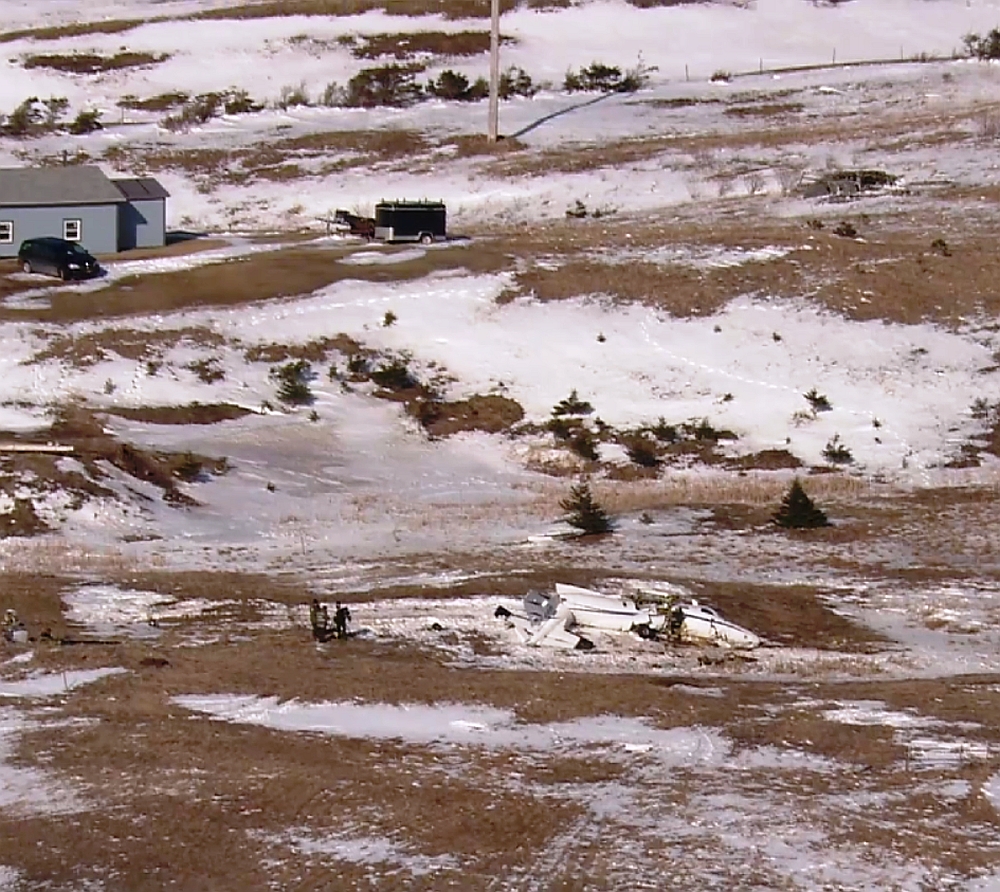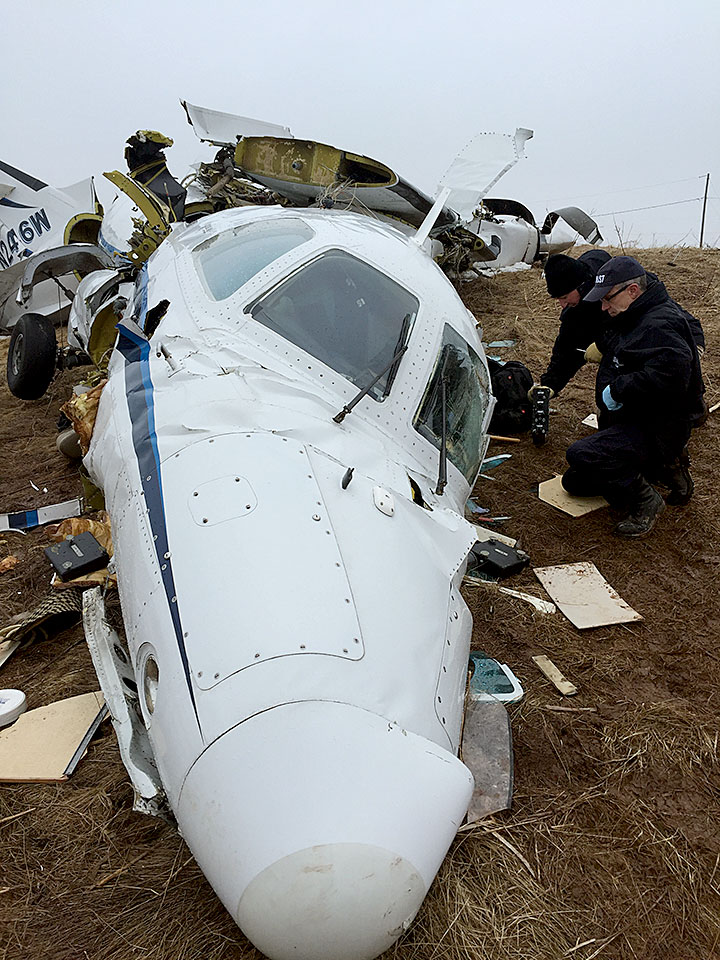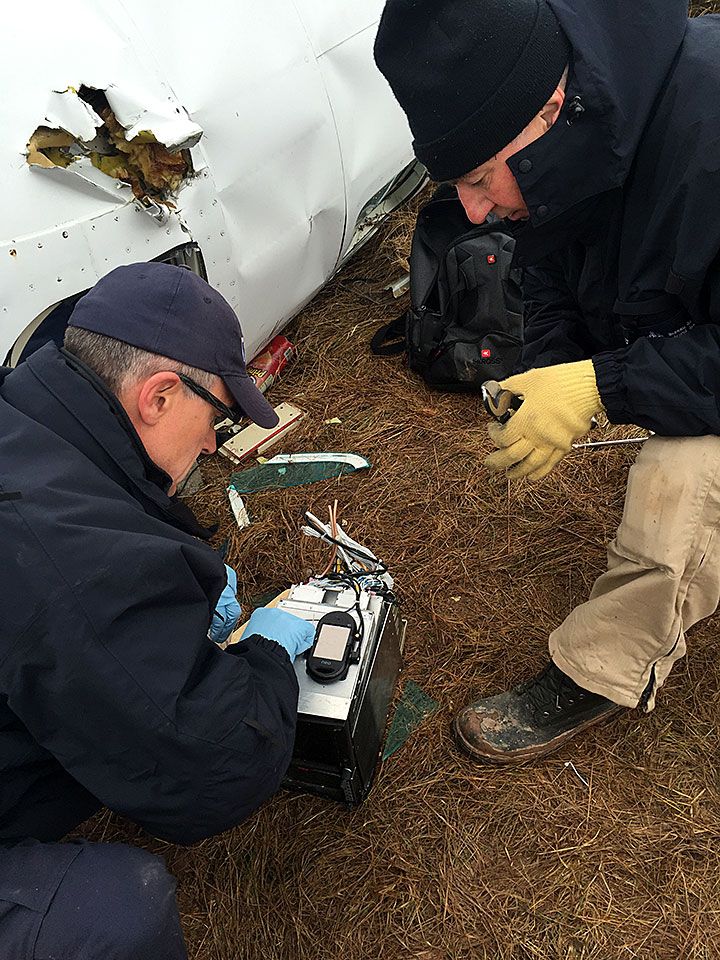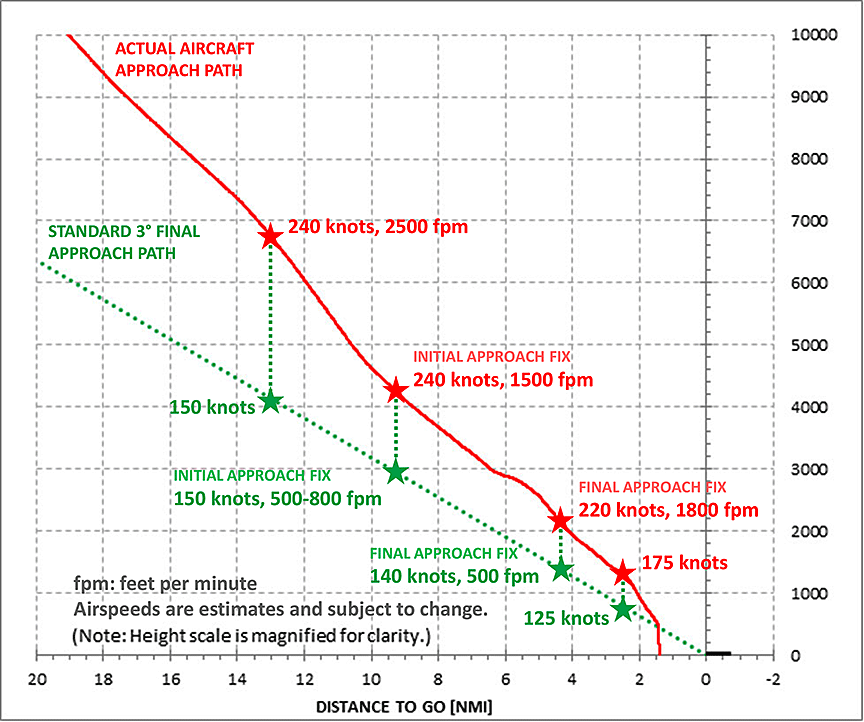Collision with terrain
Mitsubishi MU-2B-60, N246W
Îles-de-la-Madeleine Airport, Quebec, 1.4 nm WSW
The occurrence
On 29 March 2016, a private Mitsubishi MU-2B-60 aircraft (United States registration N246W), departed St. Hubert, Quebec, at 0931 local time (Eastern Daylight Time) on a flight to Îles-de-la-Madeleine, Quebec (CYGR). Onboard was the pilot-in-command, a pilot-passenger occupying the right-hand cockpit seat, and 5 passengers.
The autopilot was being used to control the aircraft throughout the flight.
At 1217 Atlantic Daylight Time (ADT), when the aircraft was at approximately 21 000 feet above sea level and 51 nautical miles (nm) from CYGR, the pilot initiated the descent. At 1225, Moncton Area Control Centre cleared the aircraft for an instrument flight rules approach (flying by reference to instruments rather than flying with visual reference to the ground) to CYGR. At 1229, 2.7 nm from Runway 07, the aircraft landing gear was lowered and approach flaps were selected.
Shortly after that, the autopilot was disconnected, and almost immediately the aircraft departed from controlled flight. It rolled quickly into a steep right bank and descended rapidly. The aircraft continued its rapid descent and impacted the ground in a near-level attitude. All 7 occupants were fatally injured.
Media materials
News release
TSB identifies unstable approach as key factor in 2016 fatal accident of Mitsubishi MU-2 aircraft in Îles-de-la-Madeleine, Quebec
Read the news release
Investigation update: Collision with terrain of a Mitsubishi MU-2B-60 in Îles-de-la-Madeleine, Quebec
Read the news release
Update on TSB investigation into the accident involving a Mitsubishi MU-2B in les Îles-de-la-Madeleine, Quebec
Read the news release
TSB launches investigation into the accident involving a Mitsubishi MU-2B in les Îles-de-la-Madeleine, Quebec
Read the news release
Backgrounders
Investigation findings (A16A0032) into the March 2016 fatal accident of a Mitsubishi MU-2B-60 in Îles-de-la-Madeleine, Quebec
Read the backgrounder
Unstable approach and aircraft upset
Read the backgrounder
TSB deploys a team of investigators to the site of an aircraft accident near the Îles-de-la-Madeleine Airport, Quebec
Dartmouth, Nova Scotia, 29 March 2016 - The Transportation Safety Board of Canada (TSB) is deploying a team of investigators north of Îles-de-la-Madeleine Airport, QC (CYGR) where an aircraft has crashed. The TSB will gather information and assess the occurrence.
Speeches
News conference for Îles-de-la-Madeleine (A16A0032) – Opening remarks
Kathy Fox, TSB Chair
Deployment notice
TSB deploys a team of investigators to the site of an aircraft accident near the Îles-de-la-Madeleine Airport, Quebec
Dartmouth, Nova Scotia, 29 March 2016 - The Transportation Safety Board of Canada (TSB) is deploying a team of investigators north of Îles-de-la-Madeleine Airport, QC (CYGR) where an aircraft has crashed. The TSB will gather information and assess the occurrence.
Videos
News conference webcast
Animation
Animation of collision with terrain of a Mitsubishi MU-2B-60, Îles-de-la-Madeleine, Quebec on 29 March 2016
Investigation information
Download high-resolution photos from the TSB Flickr page.
Class of investigation
This is a class 3 investigation. These investigations analyze a small number of safety issues, and may result in recommendations. Class 3 investigations are generally completed within 450 days. For more information, see the Policy on Occurrence Classification.
TSB investigation process
There are 3 phases to a TSB investigation
- Field phase: a team of investigators examines the occurrence site and wreckage, interviews witnesses and collects pertinent information.
- Examination and analysis phase: the TSB reviews pertinent records, tests components of the wreckage in the lab, determines the sequence of events and identifies safety deficiencies. When safety deficiencies are suspected or confirmed, the TSB advises the appropriate authority without waiting until publication of the final report.
- Report phase: a confidential draft report is approved by the Board and sent to persons and corporations who are directly concerned by the report. They then have the opportunity to dispute or correct information they believe to be incorrect. The Board considers all representations before approving the final report, which is subsequently released to the public.
For more information, see our Investigation process page.
The TSB is an independent agency that investigates air, marine, pipeline, and rail transportation occurrences. Its sole aim is the advancement of transportation safety. It is not the function of the Board to assign fault or determine civil or criminal liability.

